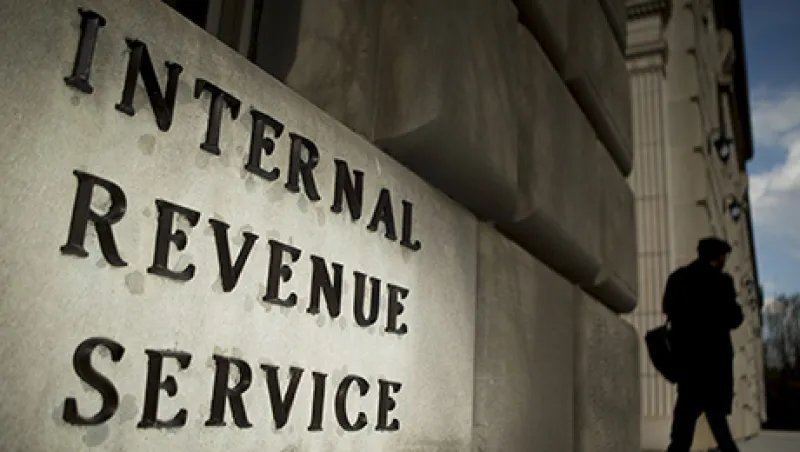Accounting firm WeiserMazars has had plenty of experience in navigating shifting financial perspectives. The latest incarnation of the firm was created by way of the April 2010 merger of New York accountancy firm Weiser, whose history dates back to 1921, and the Paris-headquartered multinational audit, accounting and consulting group Mazars. The company’s wealth management unit combines a wholly owned registered investment adviser subsidiary that handles investments with WeiserMazars’s private client services group. Richard Bloom, a CPA, personal financial and tax adviser at the firm’s office in Edison, New Jersey, focuses on multigenerational tax planning, philanthropic planning and risk management. He spoke with Andrew Barber for Institutional Investor about what external economic and market factors need to be considered when charting a family’s wealth management strategy.
Institutional Investor: What changes are happening in estate and wealth planning?
Bloom: We’re definitely seeing a shift toward income tax planning. The focus used to be always on getting the assets out of the estate and passing them on to the next generation. The estate tax rate is down to 40 percent. Now, consider that the tax rates on long-term capital gains are up to 20 percent. If you factor in the additional Medicare tax at 3.8 percent and add any impact from high state taxes, that differential between the income tax and the estate tax has sharply narrowed. You’re forced to pay more attention to the income tax implications of estate planning.
So it may actually make more sense to keep the assets in place.
Right. I’ll give you an example: If we’re strictly talking about capital-gains-qualifying assets for California residents, the total tax on the sale of an asset could be about 37 percent. If the person died with that asset, there would be no California state tax. On the estate tax side, tax could be about 40 percent, so there’s a 3 percent spread. If the individual is at or near the limits for annual exclusions or lifetime exemptions, however, it could be considerably more attractive to hold on to the asset. According to 2014 rules, you could pass on $5.43 million without paying estate tax at the federal level under lifetime exemptions. So if you’re married, you could give away $10.86 million as a couple. Therefore, if your estate is at or near that threshold, you might want to save on any income tax on selling an asset rather than avoid estate tax. So if you hold an asset to your death, that asset’s basis gets stepped up to fair market value. So you forever eliminate the potential income tax.
How are planners and investors working to stay ahead of the curve on congressional tax reform?
The estate tax world was very much in flux at the end of 2012 because of the fiscal cliff standoff. Nobody knew what was happening with the exemptions or the rates until January 2013, when the ATRA [the American Taxpayer Relief Act, which extended certain tax provisions, such as on estate and individual tax] got passed. A lot of people made gifts at the end of 2012. The real reason many of them did that was because they thought the exemption was going back down to $1 million from the $5 million under the special tax credit. To accomplish this, many used a technique called a spousal asset trust. You create a trust for your kids, but you include your spouse as a potential beneficiary. So if I set up a trust for my wife and kids, and the trustee has the discretion to distribute to my wife, the trustee could arguably make a distribution to my wife, thereby still supporting the family despite the assets being held in trust for the children. It gave people more flexibility in gaining access to funds.
What other primary trust vehicles are getting more use?
Here again, another area where income tax comes into play in the estate-planning world is in grantor trusts, where the person who sets up the trust will still pay tax on any income tax the trust earns. For estate-planning purposes, it’s usually helpful because the trust accumulates assets without being weighed down by taxes. Another benefit of this vehicle is that the trust document has a provision that allows the grantor to exchange some assets with those that are in the trust. If I have high-basis assets, I can call it cash. If the trust has low-basis assets, I can put my cash into the trust and take back those low-basis assets. If I die two days later, now my low-basis assets get stepped up to fair market value, so I just avoided the income tax on a potential sale associated with those assets. It’s yet another example of how income taxes are becoming more at the forefront of estate planning.
Your firm’s core business was largely built working with family-owned corporations, giving you insight into some of the unique issues involved in entrepreneurial wealth. What sort of structures make sense for entrepreneurs?
The one technique that’s still popular is grantor retained annuity trusts, commonly referred to as GRATs. A GRAT allows the investor to give away the potential growth of the asset to future generations. The senior family member or the owner, the entrepreneur, puts some of the stock into a trust in exchange for a note and takes back a piece of it every year. The growth associated with that stock stays inside the trust. To make the numbers work, the growth for the asset’s value has to exceed a hurdle rate of 2.4 percent. If the value of the entrepreneur’s company grows 20 percent a year but if they do it this month at 2.4 percent, then, in effect, they’re giving away 17.6 percent to their beneficiaries without paying gift or estate taxes.
What about the case of a start-up in which a younger entrepreneur is just beginning to amass what could be ultra-high wealth?
You could still get that edge. You would just have to decide who are the beneficiaries. You can’t do it directly for unborn offspring, though. This came up all the time with a lot of my past clients, who were hedge fund managers. They’re leaving and starting their own hedge fund firms. The idea always was, try to do the estate planning now because the value of the carry is minimal. The carry is really where the growth is.






